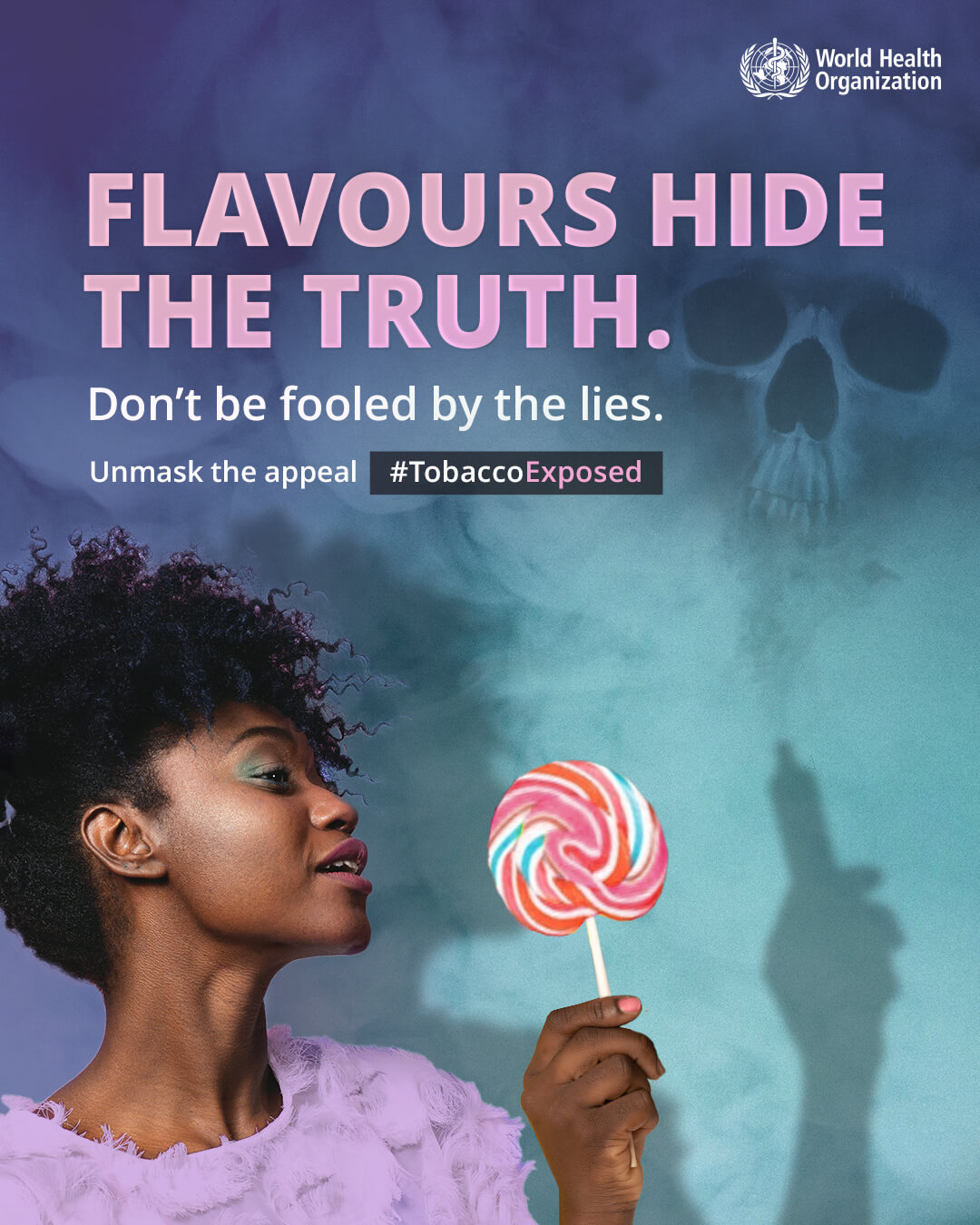Revealing the Truth: How Tobacco and Nicotine Industries Target Youth
On May 31, 2025, the World Health Organization (WHO) and public health advocates worldwide will mark World No Tobacco Day. This year’s theme, “Unmasking the Appeal,” shines a spotlight on the deceptive strategies used by the tobacco and nicotine industries to attract young people and hook a new generation of users — specifically targeting teens and young adults. Their efforts focus on making harmful products look trendy, harmless, or fun.

Despite progress in reducing tobacco use globally, these industries continue to evolve their tactics. Common strategies include:
- Flavoured products and chemical additives mask the harshness of tobacco, making it easier to start and difficult to quit.
- Stylish branding and social media marketing that frame nicotine use as fashionable or rebellious.
- Deceptive product designs that mimic sweets, toys, or everyday gadgets, directly appealing to youth while minimizing the perceived risk.
These tactics don’t just encourage experimentation; they increase the likelihood of long-term addiction and serious health consequences. Being aware of the advertising tactics used by the tobacco and nicotine industry is crucial in protecting public health, especially among young people. These industries invest heavily in sophisticated marketing strategies designed to glamorize their products, downplay the risks, and appeal to the curiosity and lifestyles of teens and young adults. From sleek, tech-inspired packaging to influencers on social media and flavours that mimic candy or fruit, these approaches are carefully crafted to make harmful products seem harmless or appealing.
By understanding and recognizing these strategies, individuals and communities can become more resilient to manipulation. Knowledge truly is power; when people are informed about how they’re being targeted, they’re better equipped to make conscious, healthy decisions and to advocate for stronger regulations that hold these industries accountable. Recognizing the tactics is the first step in resisting them and in protecting future generations from addiction and lifelong health consequences. To learn more about this global advocacy work, visit World No Tobacco Day 2025: unmasking the appeal.
What You Can Do: Resources to Quit
If you or someone in your family is thinking about quitting smoking or vaping, support is available and taking that step can make a huge difference to your health and well-being. In Manitoba, there are a variety of free resources to help you on your quit journey, including personalized counselling, quit aids, and online, phone, or text-based support. Visit our website for a complete list of available services, or call the PMH Chronic Disease Education Program’s Toll-Free line at 1-877-509-7852 to speak with a nurse educator and learn more about the Tobacco Quit Card and Counselling Program. In addition to seeking help, it’s also essential to have open, honest conversations with your children and family members about the risks of smoking and vaping. Many youth are influenced by products designed to look fun, harmless, or trendy. Talking with your loved ones about these tactics can help them recognize when they’re being targeted and empower them to make informed, healthy choices. More information can be found at Health Canada or the Consider the Consequences campaign website.

